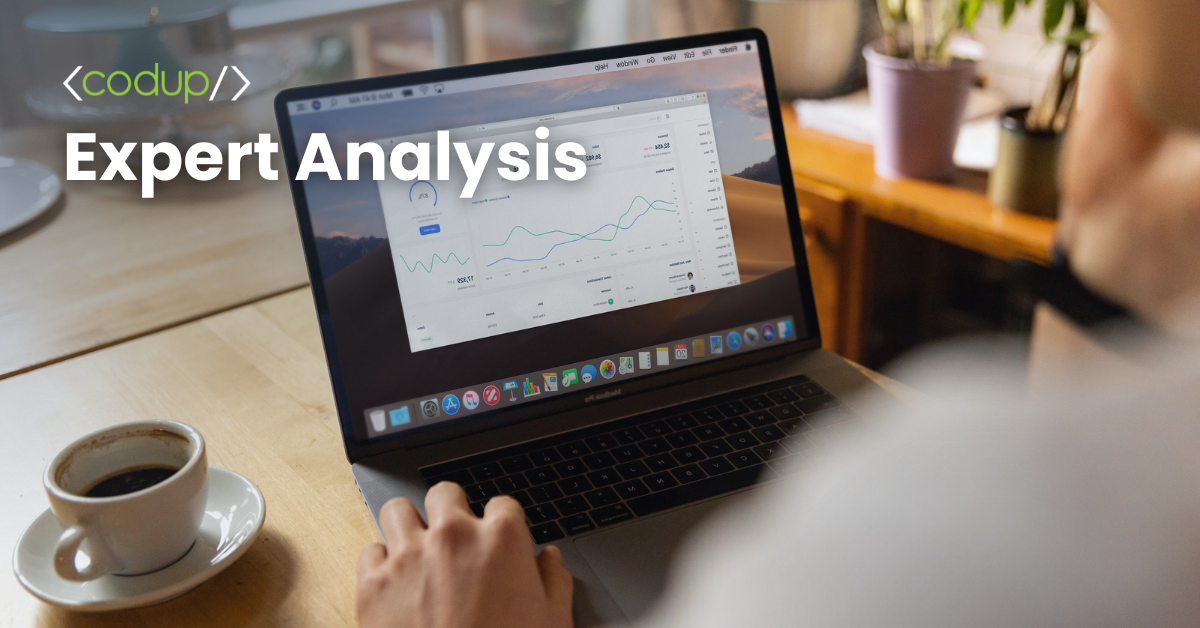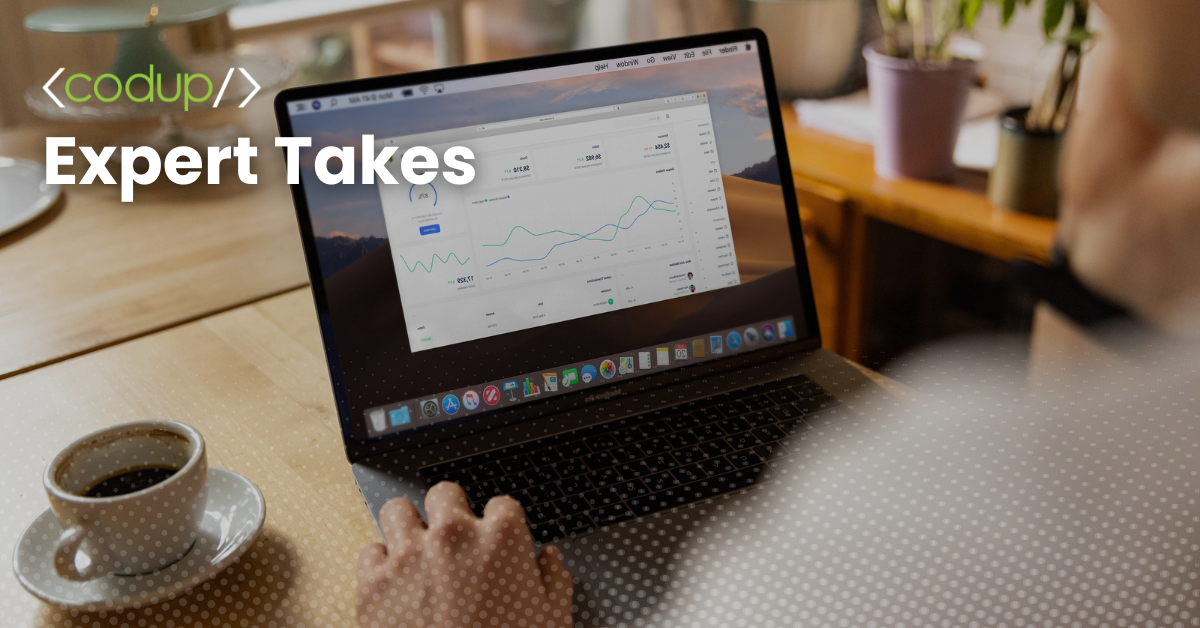Why Your B2B Sales Team Needs More Than Just a CRM: The Evolution of B2B Sales Enablement in 2025

🎧 Listen to the Full Episode
Spotify | YouTube | Apple Podcasts
Who’s Talking:
Asim Bawany – CEO, Codup
John Davis – VP of Marketing, Codup
Fahad Sheikh – Head of Product & Host, Codup
Introduction
The landscape of B2B sales enablement is undergoing a seismic shift. On the latest episode of Shift Click: The Sales Enablement Series | Why Storytelling Still Rules B2B Sales, Codup’s leadership team by Asim Bawany (CEO), John Davis (VP of Marketing), and Fahad Sheikh (Head of Product) explored a fundamental question:
“Is sales enablement still limited to giving reps collateral or has it evolved into something far more strategic?”
Today’s answer is clear: It’s a holistic alignment of data, people, technology, and culture, not just better brochures.
1. What Real Sales Enablement Looks Like
In the past, sales enablement meant polished PowerPoints and training manuals. But in modern B2B commerce and eCommerce sales strategy:
- It’s integration across CRM, CPQ, ERP, and eCommerce platforms.
- It’s collaborative, involving marketing, revenue operations, and IT, not just sales.
Asim Bawany summarizes it well:
“Sales enablement isn’t just collateral anymore. It’s processes, people, marketing, IT, and technology all working together to close the sale.”
Key takeaway: B2B sales enablement in 2025 is a company-wide capability, not just a sales tool.
2. Intent Data: The New Currency of B2B Sales Conversations
An often-asked question during the episode: What single piece of data transforms a sales call?
Asim’s reply:
“Intent. But not just intent, what kind of intent? Which categories, which documents, which emails, first-party data is gold.”
When a CRM integration surfaces the products or content a buyer engaged with, reps can craft personalized, high-value conversations.
Key takeaway: Prioritize buyer intent data in B2B to shift from reactive selling to data-driven conversations.
3. Digital Buyer Behavior: Don’t Start from Scratch
Fahad shared a startling statistic from Gartner:
“67% of the buyer’s journey is digital before they ever talk to sales.”
If sellers jump into a conversation blind, they’re already behind. SaaS has mastered this; now it’s time for B2B eCommerce and digital transformation leaders to catch up.
Key takeaway: Invest in omnichannel buyer journey visibility, before the first live call.
4. Mindset Over Machinery: Tech Should Augment, Not Replace
A recurring concern: “Is tech going to replace sales jobs?” The panel pushed back hard:
“Technology helps me. It doesn’t replace me.” — Asim Bawany
Modern enablement tools should automate repetitive tasks, not replace human relationships. Reps get more time for storytelling, trust-building, and connection that only humans can deliver.
John Davis adds:
“Sales enablement isn’t about selling, it’s about storytelling, trust, and connection.”
Key takeaway: Embrace sales enablement technology as an enabler, not a replacement for human connection.
5. Transparency Isn’t Weakness in B2B Sales Enablement
Fahad shared a common objection:
“If your customers don’t see you, how will they buy from you? Many companies fear digital visibility too much.”
But hiding product info from competitors often means hiding from your buyers as well. Controlled transparency, strategic digital visibility in B2B commerce is the smarter path.
Key takeaway: Be visible, but strategic. Enable buyers to self-educate on their terms.
6. ROI Drives Adoption, but You Must Start With Vision
Leadership often asks: “What’s the return on this investment?”
Asim is clear:
“Technology for technology’s sake will never help you. ROI depends on your vision, your processes, and how well tech aligns with your business goals.”
That’s why Codup’s B2B digital transformation services always include go-to-market alignment and cultural readiness, not just system implementation.
Key takeaway: Frame enablement as strategy first, technology second. ROI goals must be embedded from the start—not as an afterthought.
Stay Connected with Codup
Subscribe to Shift Click:
Spotify | YouTube | Apple Podcasts
Transcript:
Fahad Sheikh
All right, folks, welcome to another episode of Shift Click. Today we’re doing a special one about sales enablement, and I have with me Asim Bawany, CEO of Codup, and John Davis, VP of Marketing at Codup. You all know me as Head of Product at Codup.
We’re going to have this as an internal, unplugged conversation and talk about sales enablement in our artifacts business. We’ve all seen it: B2B companies racing to go digital while their sales teams are still stuck:
- sending quotes over email,
- chasing approvals,
- and manually checking stock in an ERP.
Sales enablement today isn’t just about arming your reps. It’s about removing friction for the buyer across every touchpoint, both digital and human.
In this episode, we’re diving deep into what real sales enablement looks like and why your CRM, your content, and your culture need to evolve together.
So let’s start with Asim. I think I painted a fair enough picture of what sales enablement should look like, but I want your thoughts. What do you think?
Asim Bawany
I think in your introduction you hit the nail right on. Sales enablement used to mean different things just a few years ago. It’s now evolved quite rapidly, if I might add. The problem, however, is that it hasn’t evolved for everyone. Sales enablement means different things for different people today, depending on the organization you’re looking at. And it can change for people.
We’re talking purely in the context of B2B eCommerce and B2B merchants: manufacturers, distributors, or wholesalers. If you ask someone from company A versus company B what sales enablement looks like:
- A mature company will talk about how platforms should enable a buying process, how there should be a handshake between the rep and a platform, how they work in parallel and augment each other’s efforts to get from quote to close.
- A less mature organization will still give you a traditional definition: you should have collateral, good information your salespeople can learn from, education, and sales support. All that is fine, and still sales enablement, but it has evolved to be a lot more than that.
It’s all the tools that come together:
- your eCommerce platform,
- your CPQ tools,
- the integrations that happen,
- eCommerce and CRM integrated,
- ERP integrated.
If you ask me to define it, it’s difficult because there are so many things now. It’s processes, education, people—not just your salespeople. It’s marketing, sales, revenue ops, IT. All that is now sales enablement.
If I’m brief: it’s all of those functions coming together to close the sale—not just the salespeople.
You also said something about enabling the conversation they want to have. Internally, we’ve been doing this: there’s a lot of data you gather in tools like your CRM—
- conversations they had,
- messaging they were exposed to,
- behavior on the website,
- what content they engaged with versus what they did not (on your site or ad platforms like LinkedIn, etc.).
I’ve been a seller all my professional life, and I still sell today. That kind of data is gold to a professional seller who knows how to use it. In legacy organizations, sellers know their stuff but almost never have technology to give them that context. And this is simple tech, not even complex.
If, as part of the sales enablement stack, they have information about what this customer was looking at—documents, products—they can personalize the conversation so well. It will lead to:
- better outcomes,
- better conversion rates,
- selling more of what the customer needs rather than guessing and getting rejected.
Intent. It’s easy to say they have intent, but that doesn’t help much. If I’m at a manufacturer or distributor with a large catalog and the customer could be interested in 500 things, “they have intent” isn’t helpful. What intent?
If your CRM can tell me:
- the categories they’ve been looking at,
- the documents they’ve been reading (and which they engaged with most),
- the types of emails they’re opening,
—all first-party intent—if I can see that on a screen while talking to them, that is gold. I can have an easier, smoother conversation that they’ll appreciate. They don’t want to spend an hour figuring out where to take the conversation, especially new buyers who don’t know my catalog.
With that information, I can:
- ask very pointed, specific questions,
- take a narrow line of questioning,
- and get to what I need quickly.
I don’t agree that sales enablement was made for SaaS. When you’re selling technology, you adopt technology fastest because that’s your business. Most of our customers—manufacturers and distributors selling pipes, hardware, nuts and bolts—don’t live in technology. They’re not exposed to it like we are. So things that come naturally to us, they don’t take for granted. It wasn’t built for SaaS—it was built for anyone who can use a little technology. We just take it for granted.
Technology is only one part of sales enablement, though. We’re technologists; we tend to focus on that. Another thing sales enablement has come to mean—again, in B2B merchants—is a mindset shift.
In traditional B2B organizations that haven’t matured yet:
- People (especially sales) see technology, eCommerce, and digital as a potential threat.
- Sometimes even the C-level sees it as an either/or—technology as a sales replacement rather than sales enablement.
That’s not right. If you’re selling complex products or to complex buyers with complex processes, as much as I, as a technologist, want to claim a shiny object replaces your 50-person sales team—that’s simply not the case.
Everyone should see technology as augmentation:
- help sellers be more efficient,
- sell more,
- outsource the grunt work to technology,
- not replace salespeople.
Technology helps me; it does not replace me. That’s an important point in our industry.
Companies are reluctant. We often hear: “We don’t want our competitors to see what we’re doing.” Okay, sure. But in doing so, you’re also not letting your customers see what you’re doing. If customers don’t see you, how will they buy? Like it or not, they are getting that information from competitors who understood the digital shift.
In the last three or four years, everyone’s waking up at the same time. It’s a race now. If you’re not racing, you’re getting left behind. Competitors are making information accessible.
Modern buyers:
- need to do research,
- want to do it on their own time, terms, and channels.
If you force them to pick up the phone for everything, they won’t. And when they are ready to pick up the phone, you won’t get that call—someone else will.
Also, it’s not true you have to expose everything to the world. Digital technology has matured rapidly. You have much more control over what someone sees on your website depending on who they are. Everything is trackable (privacy concerns aside), and you can control:
- what someone sees,
- what they don’t see.
It’s not too difficult to keep competitors out when you don’t want them to see certain information but you want customers to see it. That’s not difficult.
So people in our industry are fearful because they feel they’ll lose control. That’s a lack of maturity and understanding. It is doable today for manufacturers and distributors to be in complete control over the journey that a person—or group—experiences on their web and digital experience. Most don’t understand that yet.
I can’t tell you how many times I’ve heard: “What we sell cannot be sold online.” Almost all customers say at some point, “We can’t sell this online.”
Perhaps you cannot transact online. That may be true. But it’s absolutely not true you can’t sell online.
Selling isn’t just a salesperson calling or flying to customers. Your product data online is where:
- your customer discovers you,
- and your sales journey starts.
You’re not thinking of it as sales because it’s not a human pitch. So draw a line:
- Maybe your product cannot be transacted online (no million-dollar credit card checkout).
- But it can and should be sold online.
Companies who understand this are taking advantage.
It’s a legitimate concern to ask questions about ROI and risk. The answer depends on each business. Technology for technology’s sake never helps. Technology is only part of the formula. There has to be:
- vision,
- a clear direction.
Unfortunately, most businesses only take these initiatives seriously when competitors have already implemented technology, making them more efficient and competitive. Sometimes a company with a superior product still gets beaten because of those advantages.
When there’s pressure, you don’t have the luxury to think things through and make good decisions. Then initiatives fail, and technology gets blamed. But technology is just a tool.
If I’m a footballer—European football—my shoes help, but they don’t give me skills I don’t have. It’s a tool. Whether you’ll get ROI comes down to your individual circumstance. As technologists, it’s our job to:
- look at the situation and specific problems,
- be good stewards and advisors,
- help determine whether a piece of technology will help—or is just technology for its own sake.
Maybe that’s an ad for HubSpot. Go-to-market (GTM) and discovery—thanks to John—really enable us to understand how our initiatives become sales enablement tools. I’ve had customers ask: if you’re doing discovery on my tech stack, what does GTM have to do with it?
Everything. Whatever I build or implement has to ultimately help you:
- sell more,
- make more money, or
- save more money.
I need to understand:
- your business,
- how you talk to customers,
- why they buy from you,
- your segments and markets.
With that comprehension, I can advise:
- what technology to put in place,
- when to put it,
- when not to,
- how to put it,
- and how much to spend.
To be a good consultant, I need to start with your customers, your product, and your why. Technology is only a tool; it’s not the secret sauce.
To wrap up: it’s not just technology. With sales enablement, it’s:
- mindset and vision at the top,
- processes, people, education, material, and technology to enable sales (not just the sales team). Sales now happens through multiple channels; the salesperson is only part of the equation.
John Davis
Ultimately, the question I’m always asking myself as a marketer—aligning with sales, empowering them, getting them great leads, and seeing what they can do—is:
“What conversation do they want to have with that customer?”
Then make sure whatever we’re doing up-funnel—in the campaign or through enablement materials—or how we help them better understand who the customer is (through targeting, personalization, or engagement with the journey) sets them up to have the best conversation possible.
It’s more than a meeting agenda. It’s data—a data-driven decision about the conversation I’m going to have and a clear set of opportunities to move this through the pipeline.
- Marketing gets them to opportunity.
- Sales get them from opportunity to close—and beyond.
How are we empowering the conversations that have to occur through the opportunity phases to get them to close and beyond?
That’s where personalization comes in. If you create an experience personalized to them, you can see how they engage with that content—implicitly and explicitly. This results in better intel for the sales team so they can have a deeper conversation in a way the buyer doesn’t feel harassed or sold to, but helped and understood.
As a salesperson, what’s the one piece of information you most covet going into a call? If I had to pick one thing: intent.
I’d also ask: do they know where their customer is on the journey?
- Are they just now understanding their pain?
- Have they defined their problem and are considering competitors?
- Are they ready to buy?
With sales enablement, you create different kinds of content or experiences along that journey so that, when you look at documents and traffic and what they engage with, you get signals of where they are, not just intent to buy, but how close they are to the goalpost. That’s helpful for the conversation. Timing and what they’re looking at are super valuable.
As you target key accounts or customers:
- create content to follow their journey,
- track their progress,
- understand it as they approach the close.
It’s not just collateral; it’s the customer’s journey and how you understand it.
It becomes:
- More conversations
- Better conversations
- Better intelligence about the customer
…so you can help them in the conversation—not just sell to them. If they feel you’re connecting—like we saw on a call where Asim built great trust by getting the customer to talk deeply about their business, that’s relationship building.
Story is key. I often ask: what was the first technology that empowered marketing? My answer is fire, because it brought people together to tell stories. Storytelling is like the programming language for the human mind. If you want someone to understand something, tell a story.
When you optimize through sales enablement, what we’re really doing is bringing people around that fire—salespeople and buyers—to have a real, meaningful, value-add conversation about solving a problem (assuming you’ve got something truly great to sell).
There can be different journeys:
- Depending on where they are, they see something different on a landing page or email.
- Interactions change—back to personalization.
Where did they engage? How far did they make it? What did they look at? You can craft that journey on the way to sales. The journey itself is sales enablement because of the information gathered and the story told leading up to sales.
It’s targeted to the customer you really want to sell to. The customer who really wants to buy will make it through. It’s not a maze, we don’t make it hard, but we are targeted, and we’re filtering because you want the best leads at the right time.
There was a Nike ad—Michael Jordan: “It’s gotta be the shoes.” Everyone knew it wasn’t the shoes; it was Michael Jordan. Good marketing. No one ever said, “It’s gotta be the CRM.”
Another thing that happens in that process: we help clients better understand themselves as we go through it together. They get a new perspective, see what’s possible, and begin to get excited. Sometimes there’s struggle, then an epiphany, especially with GTM work.
We help them think about solutions as things that solve real problems and outcomes customers are thinking about. In sales enablement, you don’t want to bore the board with features and functions. You want to talk about pain, problems, and outcomes.
A lot of times customers understand their customers, but the disconnect is how to talk about it in buyer-relevant terms that drive decisions. So with sales enablement, you’re not just putting information in front of people and telling a story, you’re telling a story relatable to the pain they’re experiencing and the outcomes they’re trying to achieve.
Technology:
- optimizes,
automates, - enables all of that.
Ultimately, sales enablement is optimizing the conversation so they leave knowing you truly will solve a problem.
Asim Bawany
We could go 10 hours and still not be done. Sounds good, see you next time.
Fahad Sheikh
We talked about a lot of good points. This could turn into a three- or four-hour episode. Let’s turn this into a series. We touched on topics we can dive deeper into.
So let’s wrap this one and talk again, take each specific thing we mentioned and go deeper to get more insights for the audience.
All right, keep an eye out for the series. This was Shift Click. See you again soon.
John Davis
Awesome ! Looking forward to it, guys.
Contributors
-

Mahrukh Rafi
writer
Brand Manager



